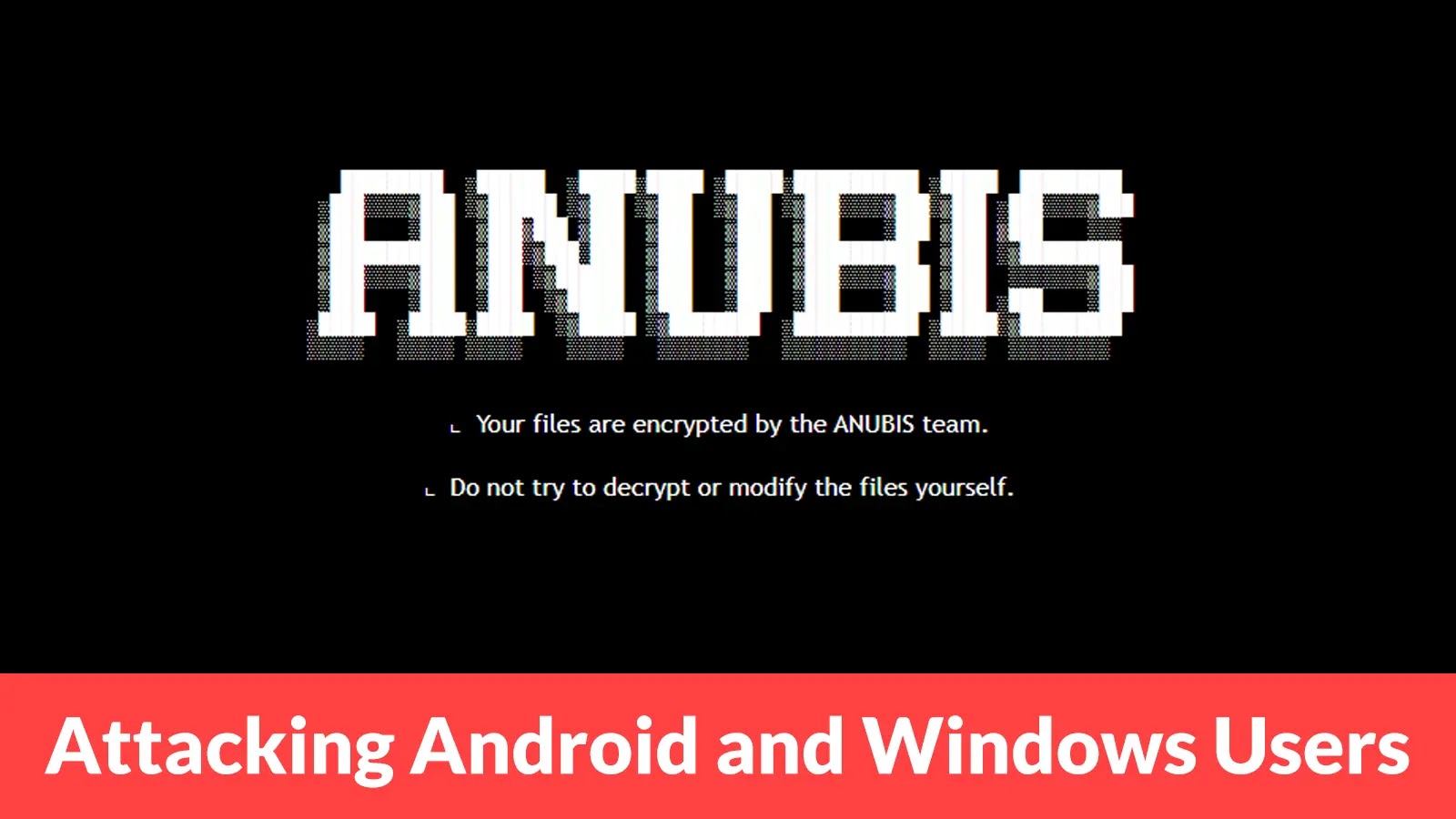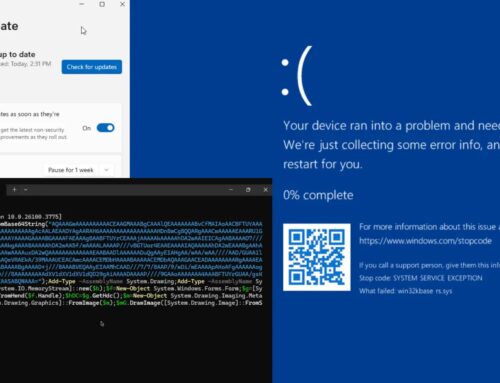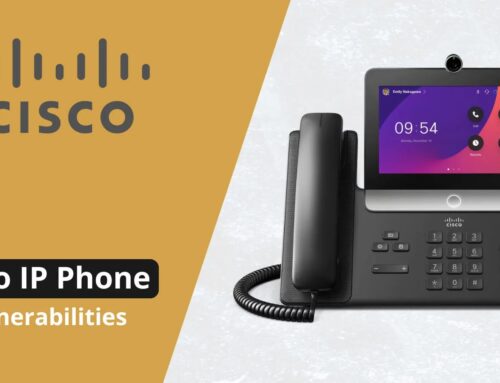
Anubis Ransomware Attacking Android and Windows Users to Encrypt Files and Steal Login Credentials
A disturbing new threat has emerged from the cybercriminal landscape, signaling a significant escalation in malware sophistication. Anubis ransomware, initially detected in November 2024, is not merely another file encryptor. This malicious entity transcends conventional ransomware by simultaneously targeting both Windows and Android platforms, integrating the destructive power of data encryption with the insidious capability of credential theft. This evolution demands immediate attention from individuals and organizations alike, as it represents a dual-pronged attack on digital assets and personal identities.
Understanding the Dual Threat: Anubis Ransomware Unpacked
Anubis ransomware distinguishes itself through its cross-platform attack vector and multifaceted functionality. Unlike typical ransomware variants that solely focus on encrypting files, Anubis combines this destructive capability with techniques historically associated with banking trojans. This means victims face not only the loss of access to their encrypted data but also the potential compromise of sensitive login credentials for financial services, social media, and other critical accounts.
Its identification in late 2024 highlights a concerning trend where cybercriminals are developing more versatile and impactful tools. The ability to attack both desktop and mobile environments significantly broadens the potential victim pool, making it a pervasive threat that requires a comprehensive defense strategy.
Operational Modus Operandi: How Anubis Infiltrates and Executes
While specific distribution methods for Anubis ransomware were not detailed in the initial alert, ransomware and credential-stealing malware typically employ similar infection vectors. Common attack paths include:
- Phishing Campaigns: Malicious emails containing weaponized attachments (e.g., seemingly legitimate documents with embedded macros) or links to compromised websites.
- Malicious Applications: On Android, rogue applications downloaded from unofficial app stores or sideloaded, disguised as legitimate tools or games.
- Exploiting Vulnerabilities: Leveraging unpatched software vulnerabilities in operating systems, applications, or network services.
- Drive-by Downloads: Infiltrating systems simply by visiting a compromised website.
Once successfully executed, Anubis initiates its dual assault:
- File Encryption: It encrypts a wide range of file types on the affected system, rendering them inaccessible without the decryption key.
- Credential Harvesting: Simultaneously, it employs techniques to capture login credentials, potentially targeting banking apps, online services, and various user accounts. This aspect is particularly alarming as it allows attackers to monetize the attack beyond just a ransomware payment.
Remediation Actions and Proactive Defense Strategies
Mitigating the threat posed by Anubis ransomware requires a multi-layered approach, combining immediate remediation with robust preventive measures. As no specific CVEs were associated with the initial public release of Anubis, the focus remains on general best practices for ransomware and malware defense.
Immediate Response Steps (Post-Infection)
- Isolate Infected Devices: Immediately disconnect compromised Windows computers and Android devices from all networks (Wi-Fi, cellular data, LAN) to prevent further spread.
- Backup Verification: Check the integrity and recency of your backups. Do not reconnect devices until you are certain backups are clean and untainted.
- Professional Consultation: If critical data is encrypted and no viable backups exist, consult with a reputable cybersecurity incident response firm. Paying the ransom is strongly discouraged as it fuels the criminal ecosystem and offers no guarantee of data recovery.
- Credential Reset: Assume all login credentials on the infected device (and any accounts accessed from it) are compromised. Change passwords for all critical online services, starting with email accounts. Enable Multi-Factor Authentication (MFA) wherever possible.
- Device Wiping and Reinstallation: For deeply infected systems, a full wipe and reinstallation of the operating system is often the safest course of action, using a verified clean image.
Proactive Prevention Measures (Pre-Infection)
- Regular Backups: Implement a robust 3-2-1 backup strategy: at least three copies of your data, stored on two different media types, with one copy off-site or air-gapped. This is your primary defense against ransomware.
- Software Updates and Patching: Keep all operating systems (Windows, Android), applications, and security software up to date. Patch management addresses known vulnerabilities that attackers exploit.
- Strong Passwords and MFA: Use strong, unique passwords for all accounts. Enable Multi-Factor Authentication (MFA) on all services that support it. This significantly reduces the risk of credential compromise.
- Security Software Utilization: Deploy reputable antivirus/anti-malware solutions on both Windows and Android devices. Ensure they are configured for real-time protection and regularly updated.
- User Education: Train users to recognize and avoid phishing attempts, malicious links, and suspicious attachments. This is crucial as social engineering remains a primary vector.
- Network Segmentation: For organizations, segment networks to limit the lateral movement of malware in case of a breach.
- Least Privilege Principle: Grant users only the minimum necessary permissions to perform their tasks, reducing the potential impact of a compromised account.
Essential Tools for Detection and Mitigation
Effective defense against threats like Anubis ransomware relies on a combination of robust security tools and disciplined practices. While no specific tool is designed solely for Anubis, the following categories and examples are vital for general ransomware and malware protection:
| Tool Name | Purpose | Link |
|---|---|---|
| Endpoint Detection and Response (EDR) Solutions | Advanced threat detection, incident response, and behavioral analysis on endpoints. | Gartner EDR Overview |
| Anti-malware Software (e.g., Malwarebytes, Bitdefender, CrowdStrike) | Real-time protection, scanning, and removal of various malware types, including ransomware. | Malwarebytes |
| Backup and Recovery Solutions (e.g., Veeam, Acronis) | Creating secure, reliable backups and facilitating data restoration post-incident. | Veeam |
| Password Managers (e.g., LastPass, 1Password, Bitwarden) | Generating and securely storing strong, unique passwords for all online accounts. | Bitwarden |
| Network Intrusion Detection/Prevention Systems (NIDS/NIPS) | Monitoring network traffic for suspicious activity and blocking known threats. | Snort |
| Phishing Simulation Platforms | Training users to identify and report phishing attempts through simulated attacks. | Cofense |
Conclusion: A Call for Heightened Vigilance
The emergence of Anubis ransomware underscores a critical shift in the threat landscape. Its ability to simultaneously encrypt files and steal credentials across both Android and Windows platforms represents a significant escalation in attack complexity and potential impact. Organizations and individuals must understand that traditional ransomware defenses are no longer sufficient when dealing with such sophisticated, multi-functional malware.
Proactive security measures, involving regular backups, diligent patching, robust endpoint protection, and continuous user education, are paramount. The fight against Anubis and similar evolving threats demands a comprehensive, layered security strategy and an unwavering commitment to cybersecurity best practices.





